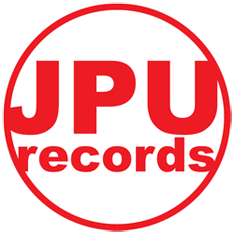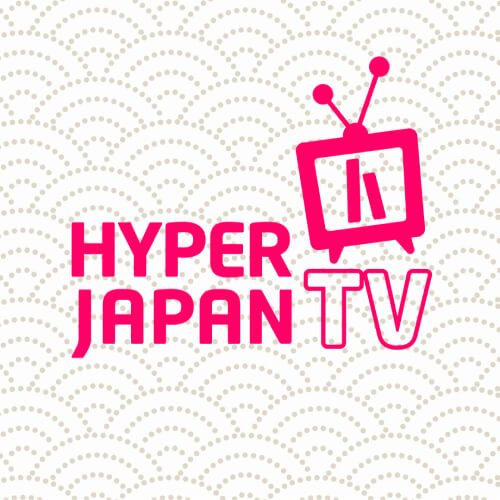Before we begin, let’s just clarify this isn’t defending the quality of English dubs out there, particularly as this is written by someone who tends to watch anime in Japanese or the improved reputation of dubs over the last couple of years. Being honest, the dubs still aren’t perfect… Despite someone proposing a law against bad dubs (not even a joke, there is a published law paper out there from 2008). So as part of my sound production degree, I completed a research project on English dubs to see why that is and if anything can be done to improve it, before creating my very own English dub…
It may surprise you but there is a lot more to an English dub than just translating the line. Firstly, in case anyone wants to do any further research, the official term is an English Localisation and the dub is just the audio track part of this. Now the aim of a localisation is to give someone the same experience in a different culture, which is more than just changing the language. This is the focus of quite a few of the points in this article, that cultural experience over a simple language change.
When a localisation is made there are four general stages of production. Firstly is pre-production where the script will be translated and adapted, the information will be gathered about the show and so on. The research stage if you will. Then it is time for the actual recording, where the voice actors have to record over the finished animation and some changes may be made to the script depending on how the recording session goes. All the recorded audio is then edited and polished in the post-production stage to ensure it is ready for release. Lastly, believe it or not, is a quality assurance! Now there are various challenges at each stage of this process and these all accumulate to affect the quality of the final product, so what exactly are they?
Now I am not fluent in Japanese but there are a number of articles out there that show Japanese and English are completely different languages. Hence the need of transcreation (a translator’s creative license to adapt lines to fit in the new language)! Where you may already think changes are bad, these changes are needed. Firstly because sentence lengths between English and Japanese are rarely the same but there are also phrases that don’t directly translate. Transcreation allows the translator to insert a phrase or wording which is more appropriate for the culture of the localisation. Without changes you either get a Sonic Adventure 2 situation where characters talk over each other or lines overlap, or Crunchyroll’s Gintama dub that feels a bit lifeless and unnatural. As language is a huge part of culture, direct translations won’t really give that same experience and hinder voice actor’s performance.
On the flip side, if companies change too much the original meaning of a line or scene changes, again it isn’t a true localisation! A prime example of this is the original Voltron, which was actually two different series in Japan (Beast King LionGo and Armored Fleet Dairugger XV). Sure, the translation process behind it was very unusual as they watched it in Japanese and just created a new script based on what they saw. Of course, the one that springs to everyone’s minds is the infamous 4Kids, who as a company edited anime series to make the dubs more child friendly, completely changing the original target audience for most of the shows they licensed. At the time, these companies could mostly get away with changes and saw relative success. As time changes, the internet makes these changes easier to detect as fans have better access to the originals and hence there has been more of a trend for direct translations. Yeah, goes without saying too many changes ruin a dub.
So why do companies still make some of these changes if it is such a bad idea? Well, sometimes these changes can help keep the same experience in their own weird way. Mainly this is for anime aimed at children, changing some background details of the show to make it more appropriate for the child’s culture such as the currency of money used in the series. These little details go a long way to make it easier for them to understand and relate to the show, as a Japanese kid would. Matt Alt, a Japanese translator, even raises the example of how the Tanuki being called Raccoons in Pom Poko actually saves a lot of confusion as Americans are a lot more familiar with raccoons and don’t detract from the experience of the film. At the end of the day, it is key to remember sometimes who these shows are aimed at, which will affect the localisation. Although this doesn’t mean a series aimed at teens in Japan should be changed to a kid in America, but rather the same demographic to make it a true localisation.
Right, so that is the translation sorted out, if that didn’t seem like a big enough hurdle, time for voice acting! Now it’s easy to blame the actors, saying they don’t put enough emotions into their voice but they have very limited scope to work with as they have to dub over the final product. In the original version, the voice actors record their lines before the animation is finished so the mouth movements are animated to fit. This gives them room to be adapt lines a bit more, get into the character, and make it their own. Sure, English voice actors may have some influence on the lines but it’s more to make the lip flaps work. Most production companies focus on precision, sacrificing performance to get it right. Of course, there are some shows that embrace mismatching some of the lip flaps to give a better performance which actually can make it a lot more enjoyable. Despite all this, there is also a deeper problem that anime with very Japanese settings can feel weird when the characters speak in English, ultimately limiting the localisation to a degree. Particularly when you think most of the highest regarded dubs have a more cultural neutral setting.
Although this overlooks one major difference between voice acting in the West versus Japan, it’s a lot more respected in Japan. In Japan, people actually train to be voice actors (seiyuu in Japanese), with various competing agencies creating a lot more business (although the pay isn’t the greatest for the actual actors). In the West, this doesn’t really happen to nearly the same extent. Sure, people still aspire to be voice actors but there isn’t really any prolific voice actors. Where that is starting to change, think of the high budget animation films in the West. They tend to be voiced by famous actors, who are more used to physical acting than just vocal acting which is a different discipline. Not to say they don’t put in a good performance, it just shows it is not held in the same high regard. Changing the perception would help recruit more voice actors and avoid things such as that typical high pitched and whiny tone in English, when there is a lot of variation of women voices in Japanese.
The last real point, which personally seems the most interesting and somewhat predictable, is which dub you watch first can influence your preference. Now there is no high-end research proving this but it’s something the research project found from interviews, questionaries and my own experience. A prime example for me is Dragonball Z, the anime I grew up with as a kid on TV so it was always in English. A few years back, watching it in Japanese for the first time, finding it awful as the voices just didn’t seem to match the characters. Strange because it was the original but the English voices just became that ingrained with the characters in my mind. Yet there are some anime where the voices of the characters sound very similar in both dubs, which help create no real preference. This may be the true way to master the localisation, as long as voice stereotypes for particular characters match in both cultures, this is something the industry could use to improve the quality.
Before we conclude on the need for dubs, here’s an interesting bit of information from looking at localisations the other way round. Adachi did an interesting study comparing the Disney English dub of Ghilbi films to the Japanese dubs of Pixar films. There were some interesting differences, but most shockingly the English dub simplified the language within the films but the Japanese dub was quite similar to the original. Further to this, there was less silence in the English Ghibli dub compared to the original, although there wasn’t much a difference between the Pixar dubs. Sure, Disney were probably aiming for a younger audience hence making the language more accessible and adding some sound to ensure they are still engaged throughout the film. Yet the view of the Japanese dub was to preserve the original feel of the film, arguably a truer localisation.
With all these challenges, why do we need dubs? Well to sell them. Particularly in the UK, anime is very rarely sold without an English dub and uncommon for it to be shown on TV in Japanese (although films are shown in Japanese more commonly but not always). It’s part of the commercial promotion to ensure they appeal to those who do want an English dub and increasing the audience. It is only too easy to forget it makes it more accessible for those who find it hard to read or just want to enjoy the art. Reading this view really changed my mind and I’ve started to watch anime in English dub if it’s a more casual watch to just enjoy the show. Particularly to rewatching it or have it on the background. So sure, English dubs aren’t perfect and probably never will be. Where some of the challenges will be easy to overcome, some are a lot more challenging. If you personally don’t want them, just avoid it. Let them serve their purpose for those who want and need them as, without dubs, anime won’t be sold in your country!





















